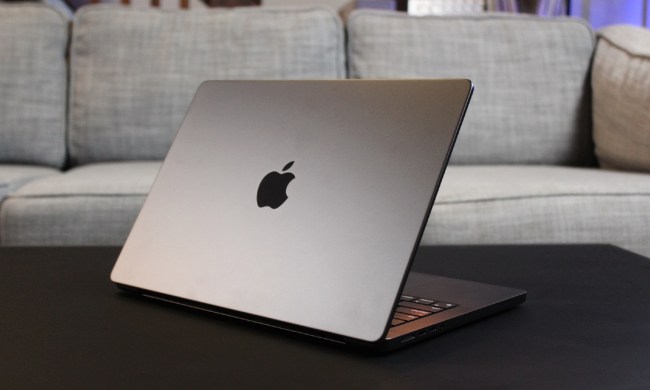For years now, Apple has delayed introducing ultrathin bezels to its MacBook lineup. The closest you can get today is the MacBook Pro 16-inch, though its bezels still don’t quite compare to some competitors. Now, though, it seems Apple is finally planning to change that.
Spotted by Patently Apple, a new patent won by Apple highlights a fresh MacBook design featuring incredibly thin screen bezels. They are so thin, in fact, that you may be wondering where exactly the webcam would fit in. The illustrations depict a MacBook Pro 16 — the smaller model of Apple’s high-end Mac is nowhere to be found, so it is not clear if this means the MacBook Pro 13 will miss out on the visual change.

Either way, many of Apple’s rivals have already released laptops with superthin screen edges, from the Dell XPS 17 to the Samsung Galaxy Book Flex.
Apple typically tends to take its time when it comes to new innovations. Where other companies rush to market in a bid to earn that coveted “world’s first” tag, Apple prefers to wait until it can sweep away the competition with the best version in the biz. And judging by this latest patent, it could be on to a winner, with bezels that outstrip even Dell’s impressive effort.
That does not make the wait any more comfortable for Mac fans, though. It is made even more egregious by the fact that Apple’s iPhones have had slimline bezels since 2017 with the launch of the iPhone X, so the company clearly knows how to do it.
There could be one compelling reason for the delay, though: Face ID. Apple is heavily rumored to be bringing this super-secure facial recognition tech to its laptops in the near future, but how exactly it would incorporate the tech into such a razor-thin MacBook edge remains to be seen. After all, what makes Face ID so secure is its incorporation of several sensors and cameras to help verify your identity.
Without a bezel to contain these sensors, the only other option would seem to be to put the cameras below the screen itself, much like what ZTE is planning with its Axon 20 5G phone. That kind of tech is likely a long way off, though, and the rumor mill has been absolutely silent when it comes to Apple incorporating this futuristic tech into its MacBooks. The likelihood is either Face ID on the Mac is not imminent, or these ultrathin bezels are. Judging by the evidence, including Face ID code embedded into MacOS, we are going with the latter.
If you just want thinner bezels without pushing for the absolute thinnest edges ever, the MacBook Pro 14-inch is rumored to be just around the corner. Much like how the MacBook Pro 16 replaced the MacBook Pro 15, this model is expected to phase out the MacBook Pro 13. It’s a laptop that occupies the same footprint while cutting down the bezels and offering more screen space. According to respected Apple analyst Ming-Chi Kuo, the MacBook Pro 14 is set to launch in late 2020 or early 2021.



